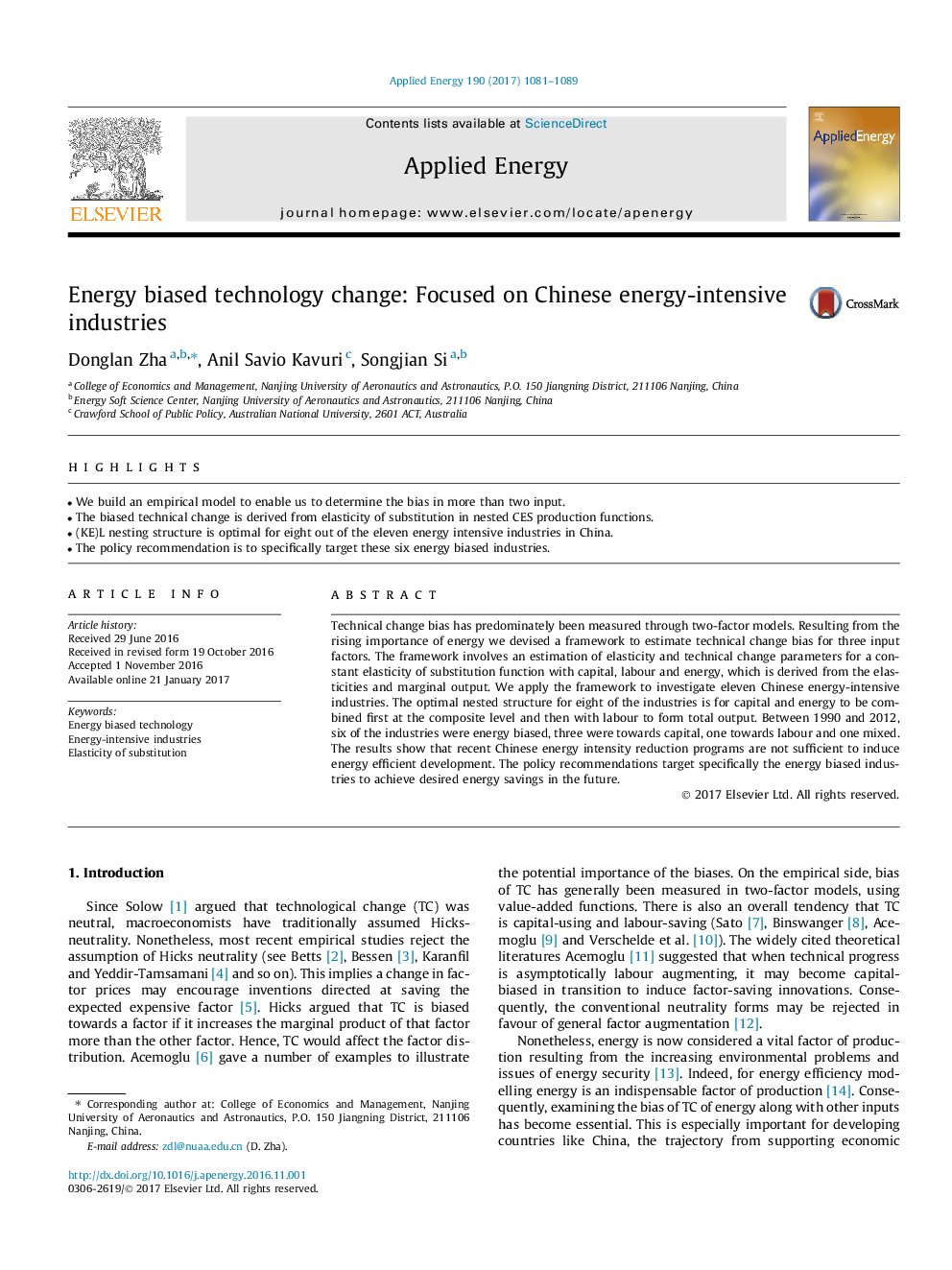| Article ID | Journal | Published Year | Pages | File Type |
|---|---|---|---|---|
| 6478682 | Applied Energy | 2017 | 9 Pages |
â¢We build an empirical model to enable us to determine the bias in more than two input.â¢The biased technical change is derived from elasticity of substitution in nested CES production functions.â¢(KE)L nesting structure is optimal for eight out of the eleven energy intensive industries in China.â¢The policy recommendation is to specifically target these six energy biased industries.
Technical change bias has predominately been measured through two-factor models. Resulting from the rising importance of energy we devised a framework to estimate technical change bias for three input factors. The framework involves an estimation of elasticity and technical change parameters for a constant elasticity of substitution function with capital, labour and energy, which is derived from the elasticities and marginal output. We apply the framework to investigate eleven Chinese energy-intensive industries. The optimal nested structure for eight of the industries is for capital and energy to be combined first at the composite level and then with labour to form total output. Between 1990 and 2012, six of the industries were energy biased, three were towards capital, one towards labour and one mixed. The results show that recent Chinese energy intensity reduction programs are not sufficient to induce energy efficient development. The policy recommendations target specifically the energy biased industries to achieve desired energy savings in the future.
